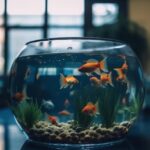Table of Contents
Introduction
Koi ponds are a beautiful and serene addition to any garden, but maintaining them requires careful attention to water quality. Proper filtration is crucial to keep the water clear, free of harmful substances, and safe for koi fish. Koi Pond Filter media play a pivotal role in the filtration process, providing surfaces for beneficial bacteria to colonize and removing debris and toxins from the water. This guide explores the different types of filter media, their benefits, and how to choose and maintain them for optimal pond health.
Understanding Koi Pond Filtration
Why Filtration is Important
Filtration in a koi pond serves multiple purposes:
- Mechanical Filtration: Removes physical debris such as leaves, uneaten food, and fish waste.
- Biological Filtration: Breaks down harmful ammonia and nitrites into less toxic nitrates using beneficial bacteria.
- Chemical Filtration: Removes dissolved organic compounds, heavy metals, and other toxins through chemical processes.
Types of Filter Media
Each type of filtration requires specific filter media to function effectively. The primary types of filter media used in koi ponds are:
- Mechanical Filter Media
- Biological Filter Media
- Chemical Filter Media
Mechanical Filter Media
Function
Mechanical filter media physically trap and remove particulate matter from the water. This media type is typically the first line of defense in a filtration system, preventing large debris from clogging biological and chemical filters.
Common Types
- Filter Pads and Sponges: Made from foam or other porous materials, these pads trap large and small particles as water passes through.
- Filter Brushes: These consist of bristles that catch debris while allowing water to flow freely.
- Filter Mats: Thick, fibrous mats that provide a large surface area for trapping particles.
Benefits
- Easy to Clean: Most mechanical filter media can be rinsed and reused.
- Variety of Sizes: Available in various densities to capture different sizes of debris.
Biological Filter Media
Function
Biological filter media provide a surface for beneficial bacteria to colonize. These bacteria are essential for breaking down toxic ammonia and nitrites into less harmful nitrates through the nitrogen cycle.
Common Types
- Ceramic Rings: Made from a porous ceramic material that offers a large surface area for bacterial growth.
- Bio Balls: Plastic spheres with a high surface area to volume ratio, designed for optimal bacterial colonization.
- Lava Rock: Natural volcanic rock that is highly porous and effective for biological filtration.
- K1 Media: Small, plastic media that provide a high surface area are often used in moving bed filters.
Benefits
- Promotes Healthy Bacteria: Supports the growth of bacteria essential for a healthy pond ecosystem.
- Long-lasting: Biological media do not need frequent replacement and can last for years.
Chemical Filter Media
Function
Chemical filter media remove dissolved substances from the water through chemical reactions. They help to clarify water and remove harmful chemicals and heavy metals.
Common Types
- Activated Carbon: Absorbs dissolved organic compounds, chlorine, and other chemicals.
- Zeolite: A natural mineral that removes ammonia and other pollutants.
- Phosphate Removers: Specialized media that bind and remove phosphates to prevent algae growth.
Benefits
- Improves Water Clarity: Helps to keep water crystal clear by removing dissolved impurities.
- Reduces Toxins: Effective at removing harmful substances that can negatively impact fish health.
Choosing the Right Filter Media
Pond Size and Stocking Density
The size of your pond and the number of fish it houses will influence the type and amount of filter media required. Larger ponds with more fish will need more robust filtration systems.
Filter Type
Your filter type (e.g., canister, bead, or trickle filter) will determine the compatible filter media. Ensure that the media you choose is suitable for your specific filter.
Maintenance Requirements
Consider the maintenance frequency and ease of cleaning for each type of filter media. Mechanical media may need more frequent cleaning, while biological media typically require less frequent attention.
Maintaining Filter Media
Regular Cleaning
Mechanical filter media should be cleaned regularly to prevent clogging and ensure efficient filtration. Biological media should be rinsed occasionally using pond water to preserve beneficial bacteria.
Replacement Schedule
While some filter media are reusable, others like activated carbon and zeolite need periodic replacement to remain effective. Follow the manufacturer’s recommendations for replacement intervals.
Monitoring Water Quality
Regularly test your pond water for ammonia, nitrites, nitrates, and other parameters to ensure your filter media are working effectively. Adjust your filtration system as needed based on the test results.
Conclusion
Effective filtration is the cornerstone of a healthy koi pond, and choosing the right filter media is crucial for maintaining water quality. By understanding the different types of filter media and their specific functions, you can create a balanced filtration system that keeps your pond clean and your koi fish healthy. Regular maintenance and monitoring will ensure that your filter media continues to perform optimally, providing a beautiful and thriving environment for your aquatic pets.






